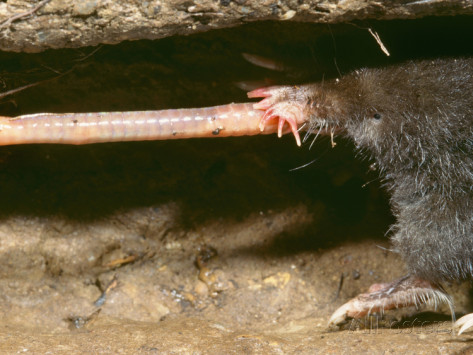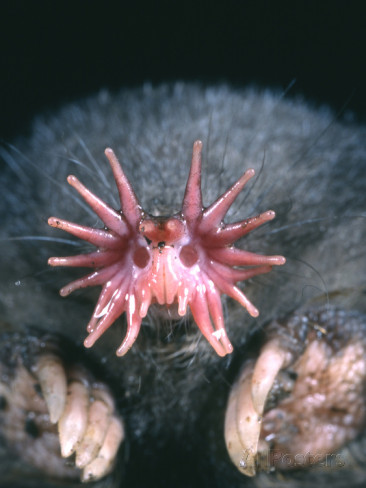Interactions
Condylura cristata lives primarily underground, so
there is very little interaction with other species. The few
interactions C. cristata does have are with its prey,
predators and parasites.
C. cristata does have are with its prey,
predators and parasites.
Prey
C. cristata patrol their tunnels, waiting for
terrestrial invertabrates to pass through for them to eat. These
prey include
earthworms (Lumbricus terrestris) and
beetle larvae
(Armadillidium vulgare).
But this accounts for only about a quarter of their diet
(Saunders 1988). The rest of its nutrients are obtained from underwater, where they
find aquatic invertebrates, like
stonefly (Plecoptera) and
dragonfly (Odonata) larvae,  annelids, mollusks, small
amphibians, and fish (Saunders 1988).
annelids, mollusks, small
amphibians, and fish (Saunders 1988).
Predators
Because C. cristata is so versatile as far as the
habitats it can live in, it has acquired numerous predators that
are found in these environments. From the aquatic environment, it
has to watch out for
northern pike (Esoc lucius),
largemouth bass (Micropterus salmonides) and
bullfrogs (Gould et al. 1998). On land, weasels, skunks, mink,
and
red fox (Vulpes vulpes) would not pass on the
opportunity to eat C. cristata (Saunders 1988). And the few
times that C. cristata is out in the open, it has to be
wary of birds of prey such as
red-tailed hawk (Buteo jamaicensis) and
barred owl (Strix varia) (Saunders 1988).
Parasites
C. cristata, similar to many moles, is often infected
by isosporans. These parasites infect the digestive tract and
for oocysts are then passed through the feces to the environment
(Duszynski 1989). More information about isosporans can be found
here.
